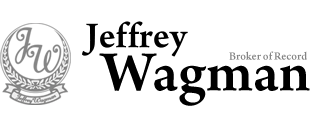With fixed rates below variable ones, mortgage market is in the Upside Down
7/28/2019
| SHARE
Posted in Mortgages and Real Estate by Vanguard Realty | Back to Main Blog Page

Call it the Stranger Things of the housing market: Canadians can now get a lower interest rate on a new mortgage by locking into a fixed rate, rather than opting for a variable rate.
That’s not how things usually work.
“People are used to paying extra for the ‘insurance’ of a five-year fixed rate,” Robert McLister, a Toronto mortgage broker and founder of RateSpy, said via email.
But that price premium is now gone. For example, the lowest nationally-available five-year fixed rate for a conventional mortgage is 2.69 per cent, according to rates-comparisons site RateSpy.com. By comparison, the lowest equivalent variable rate is 2.84 per cent.
When it comes to financing available to well-qualified borrowers, five-year fixed rates haven’t been this cheap compared to variable rates in decades. The last time the mortgage market pulled off something similar was right before the 1990s recession, according to historical data compiled by McLister.
“We’re in rare territory,” he wrote in a recent blog post.
Here’s what to make of it.
Investors are worried about a slowing economy and possibly a recession
What’s happening in the mortgage market has a lot to do with the bond market, where investors are currently getting a better return on short-term than on longer-term debt.
A bond is a type of investment that represents a loan made by an investor to a company or government entity for a set period of time. Normally, lending money over longer time horizon yields higher returns, a reward for creditors willing to take on the higher risk of being separated from their money for longer. But returns on longer-term bonds can fall below those on short-term debt when investors believe the economy is going to slow down — or even dip into recession — and interest rates are headed south as well. The result is what economists call an inverted yield curve.
That was, until recently, the situation in the U.S., where traders are worried the economy is going to hit the brakes. The yield curve there has now steepened significantly as the U.S. central bank, the Federal Reserve, is widely expected to cut interest rates on July 31, which the market hopes will keep the economy running.
In Canada, though, the yield curve is still inverted. That’s not necessarily a sign of bad things to come. Rather, it likely reflects a combination of domestic and external influences.
On the one hand, lower returns on long-term debt in the U.S. and other markets put downward pressure on Canadian longer-term bonds.
“Year-to-date, Canada has imported roughly 70 per cent of moves in global markets,” said Ian Pollick, head of North American Rates Strategy at CIBC Global Markets.
On the other hand, our own central bank, the Bank of Canada (BoC), has given no hint so far of wanting to cut rates, as our economy has been chugging along just fine, Pollick said.
And while an inverted yield curve has often predicted a period of cooler growth, it’s a much less reliable predictor of actual recessions in Canada than it is in the U.S., said Doug Porter, chief economist at BMO Financial Group.
For his part, BoC governor Stephen Poloz recently said he believes Canada’s current yield-curve inversion is an “innocent inversion” that is “more statistical than indicative of a recession.”
What does this have to do with the mortgage market?
The yield on the five-year Government of Canada bond is a key benchmark for a five-year fixed-rate mortgage. And as the return on the five-year government bonds moved lower, so did the interest rate on five-year fixed-rate mortgages.
On the other hand, the main influence on variable rate mortgages is the BoC’s key interest rate, which affects short-term rates and hasn’t moved since October 2018.
This won’t last forever, though. Pollick expects the BoC to have to cut interest rates next spring, as lower rates in the U.S. put upward pressure on the loonie, which will be a drag on Canada’s economic growth.
Bond markets tend to adjust to a first expected interest rate cut roughly six months before it actually happens, so if the BoC were to cut rate rates in March or April, you’d see the yield curve starting to steepen around October, Pollick said.
Porter, however, does not see Canada’s central bank moving rates any time soon. BMO’s forecast is for steady rates throughout 2020.
The implication for the mortgage market is that “we could be in this very unusual situation for a while,” he said.
What are the implications for Canadian mortgage holders?
If you’re in the market for a new mortgage, a five-year fixed-rate mortgage at 2.69 per cent or less “is hard to say no to,” McLister said.
If you can stomach some risk, you might want to gun for an even lower rate, such as the 2.49 per cent fixed rate that’s currently available on mortgages with a two-year term.
If you currently have a variable-rate mortgage you might be able to lock into a lower fixed rate. In a recent blog post, McLister said he spoke with a couple with a 3.4 per cent variable rate whose bank is offering a 2.92 per cent fixed rate. That would translate to almost $4,200 in savings on a $400,000 mortgage, according to McLister.
If you decide to switch to a fixed rate, you should still try to negotiate with their bank, McLister said. One way to do that is by printing off a list of the best mortgage rates you’d be eligible off with other lenders. You should also keep in mind that your bank might want you to sign up for a term that’s longer than the remaining term on your current mortgage. Finally, you should be aware that breaking your mortgage usually comes with steeper penalties when you have a fixed-rate mortgage, which could make locking-in less attractive if there’s a change you’ll have to move or refinance before the end of your new fixed term.
As for signing up for a new variable-rate mortgage, McLister is wary of picking that option in hopes your borrowing costs will go down if a BoC cuts next year. Even if the central bank does lower its benchmark rate next year, there is no guarantee lenders will pass through 100 per cent of those savings to borrowers, according to McLister.
“Banks can get stingy to protect their profits in low- or falling-rate environments,” he said.
Source: Global News
Canadian Mortgage Market, Fixed Rate Mortgages, Home Buyers, Mortgage Consumers, Mortgage Market, Mortgage Rates, Mortgage Rates Canada, Mortgage Trends, Mortgages & Real Estate, Variable Rate Mortgages

Thinking of buying or selling a property, or have a question regarding the real estate market? Fill out the form below and we'll get back to you promptly.
